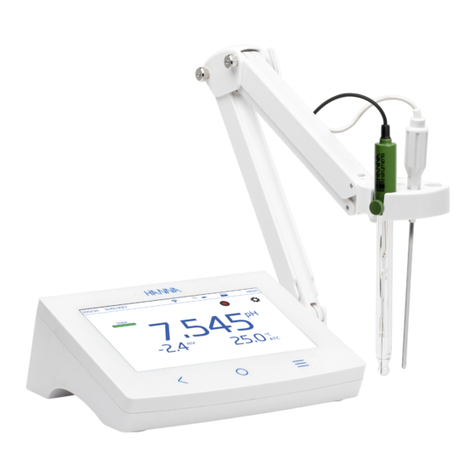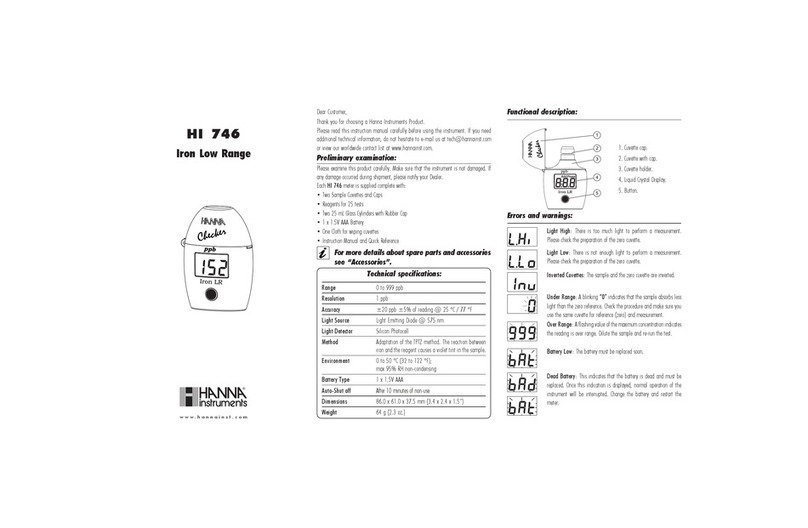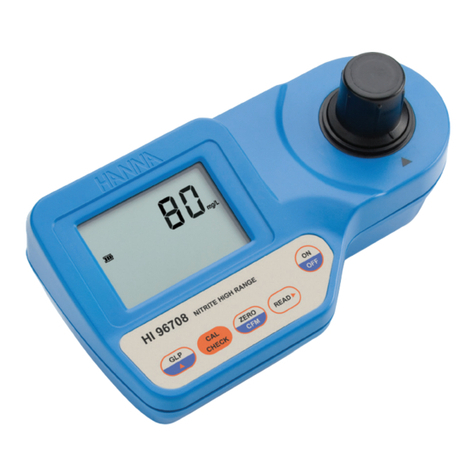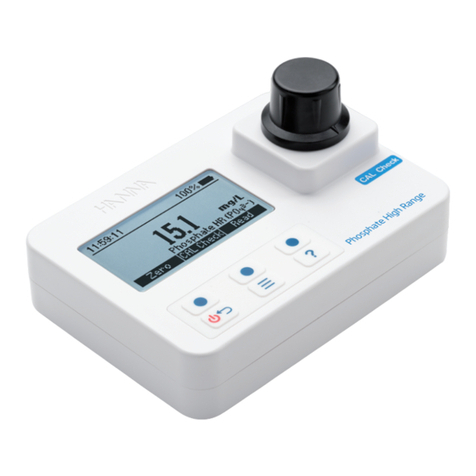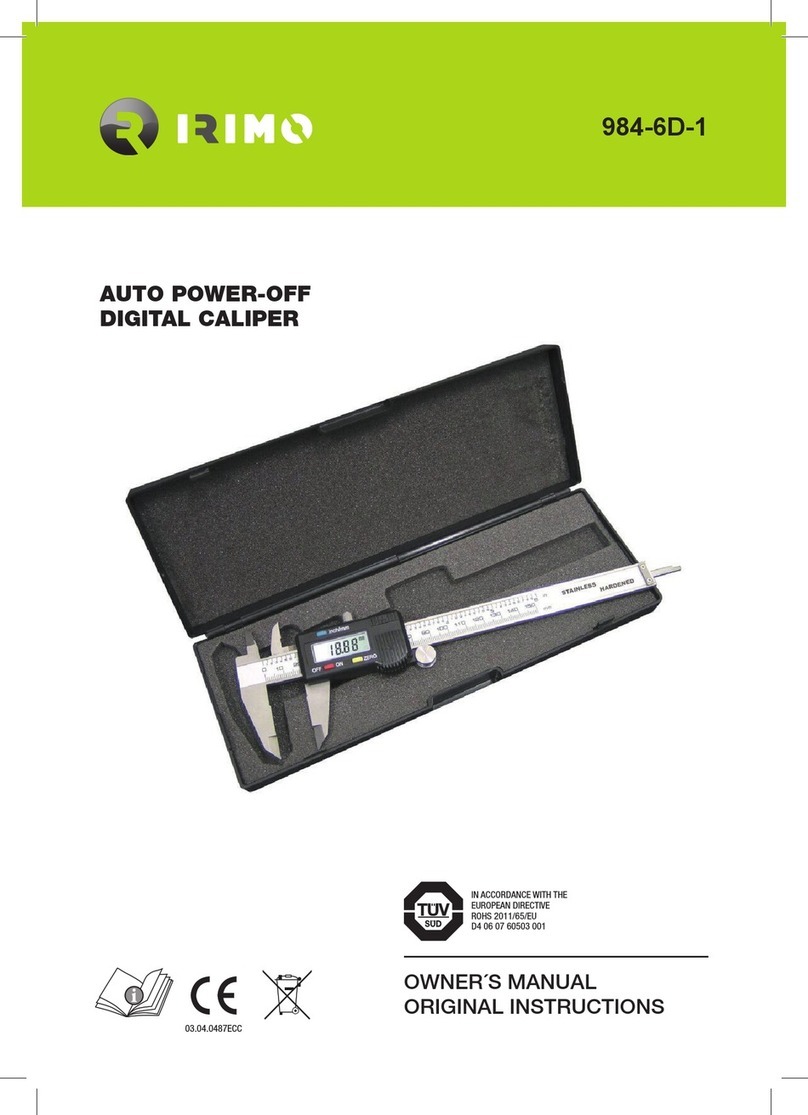Hanna Instruments HI 110 User manual
Other Hanna Instruments Measuring Instrument manuals
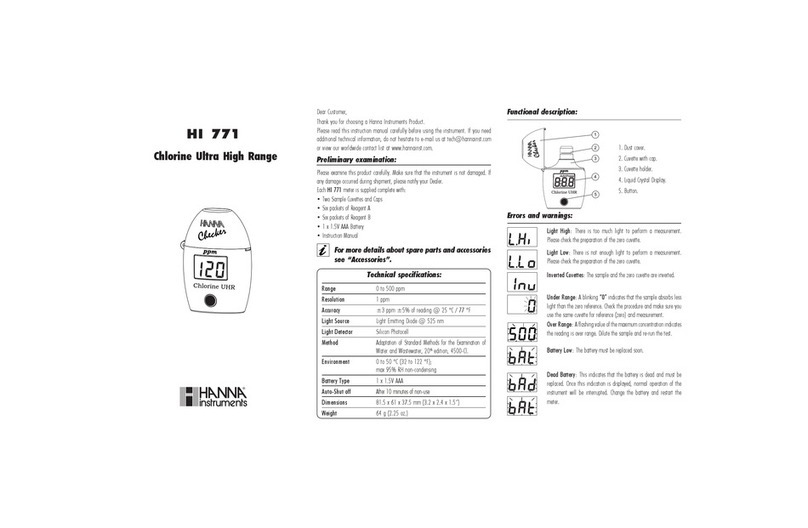
Hanna Instruments
Hanna Instruments HI 771 User manual
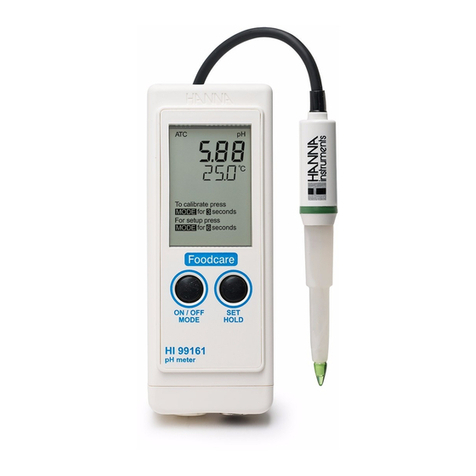
Hanna Instruments
Hanna Instruments HI 99161 User manual
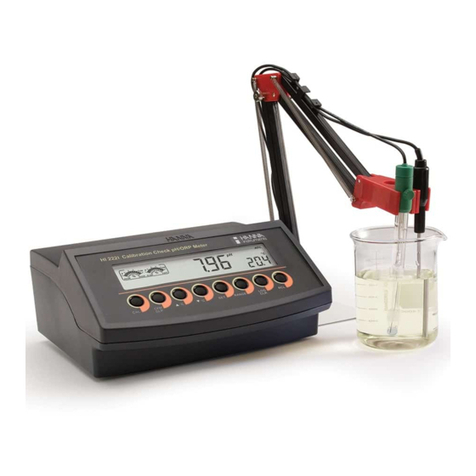
Hanna Instruments
Hanna Instruments HI 2221 User manual
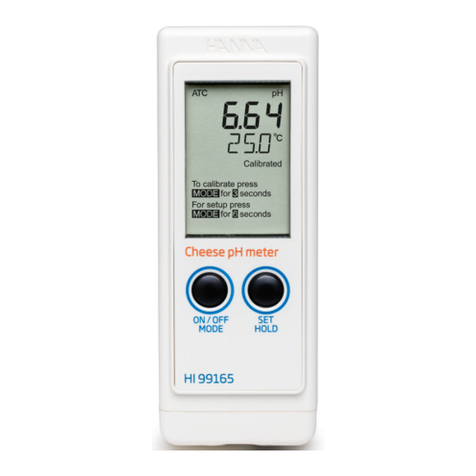
Hanna Instruments
Hanna Instruments HI99165 User manual
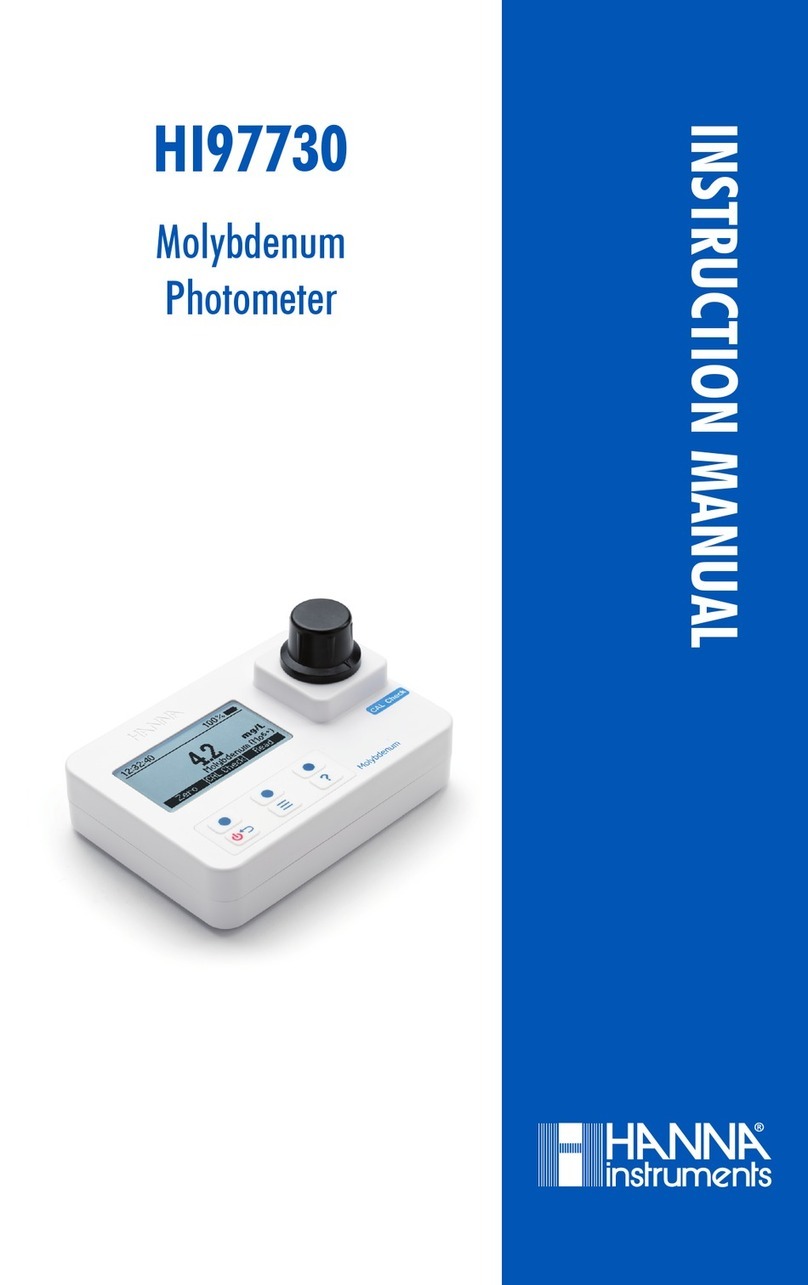
Hanna Instruments
Hanna Instruments HI97730 User manual
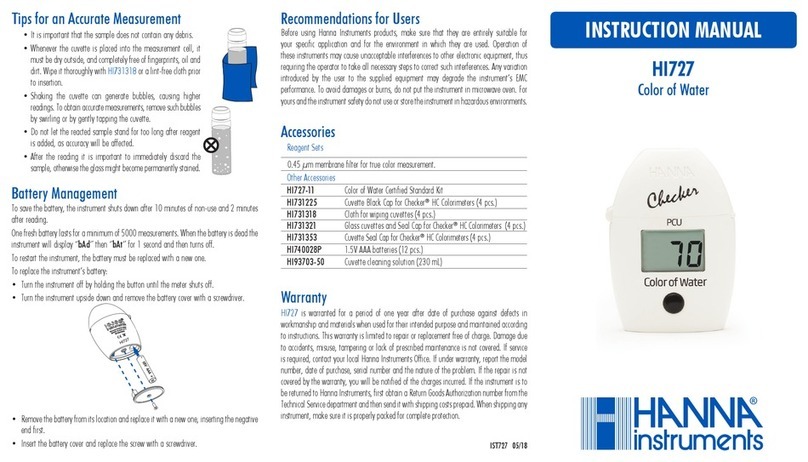
Hanna Instruments
Hanna Instruments HI727 User manual
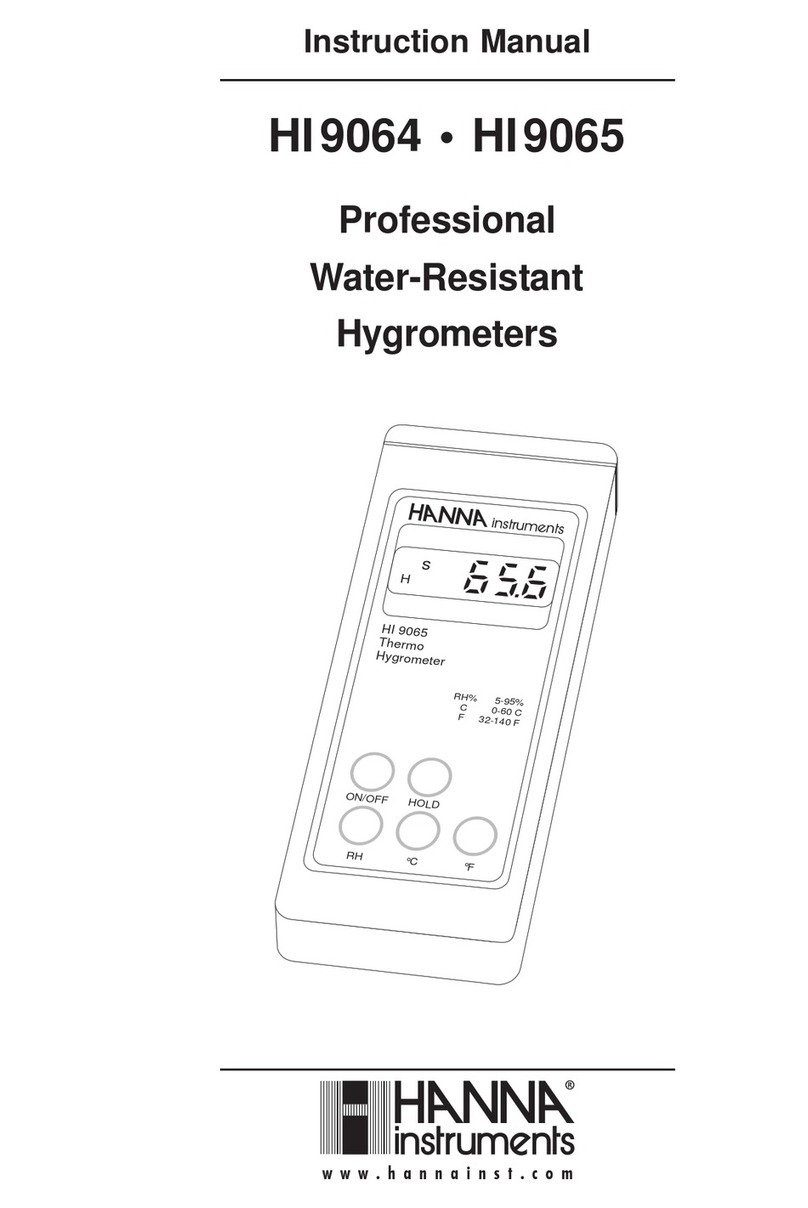
Hanna Instruments
Hanna Instruments HI9064 User manual
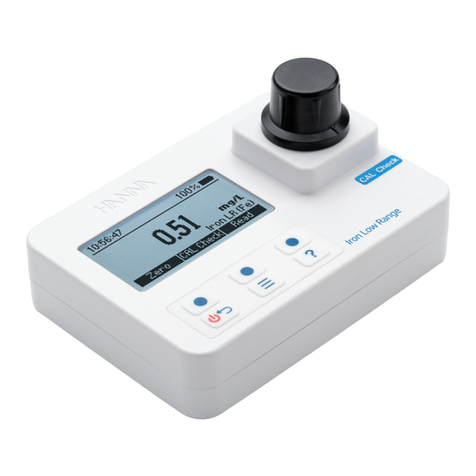
Hanna Instruments
Hanna Instruments HI97746 User manual
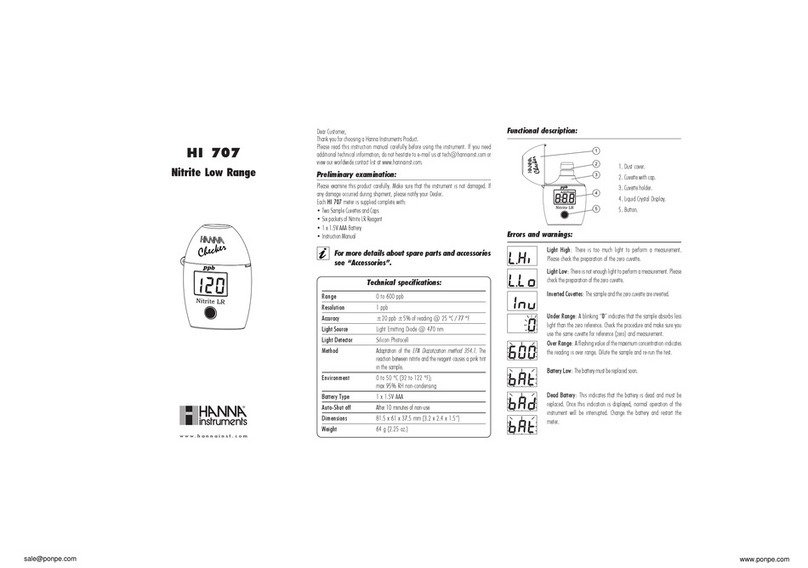
Hanna Instruments
Hanna Instruments Nitrite Low HI 707 User manual
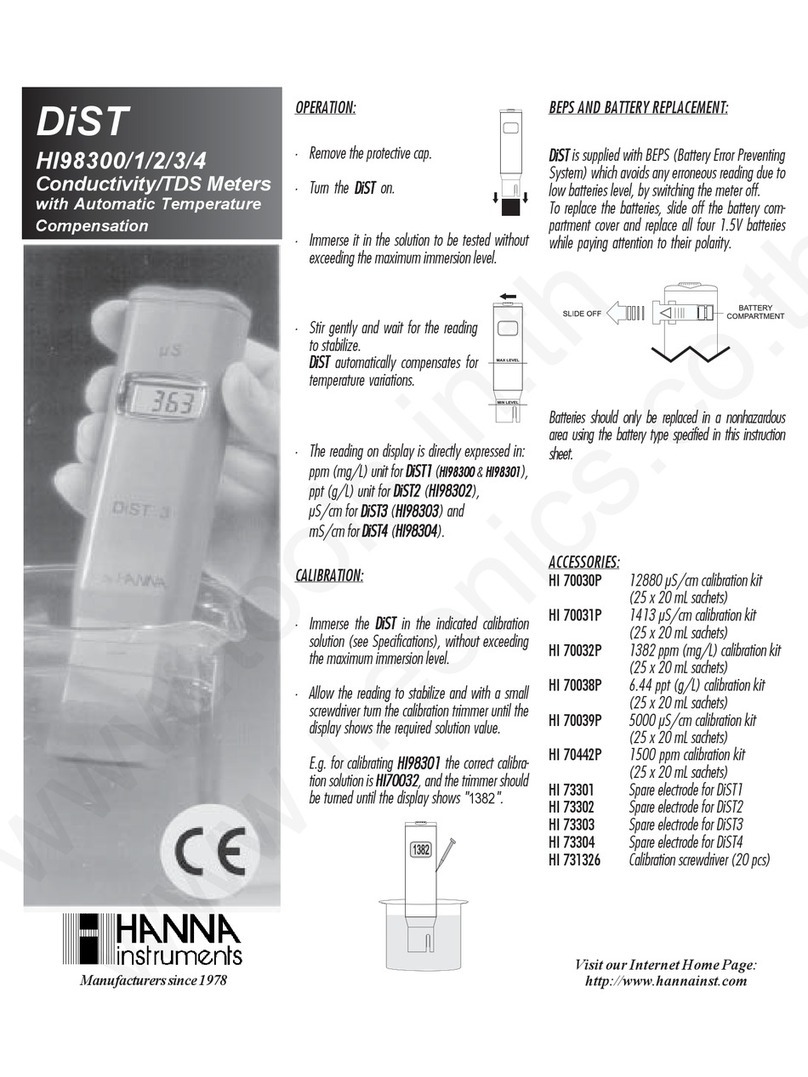
Hanna Instruments
Hanna Instruments DiST HI 98302 User manual
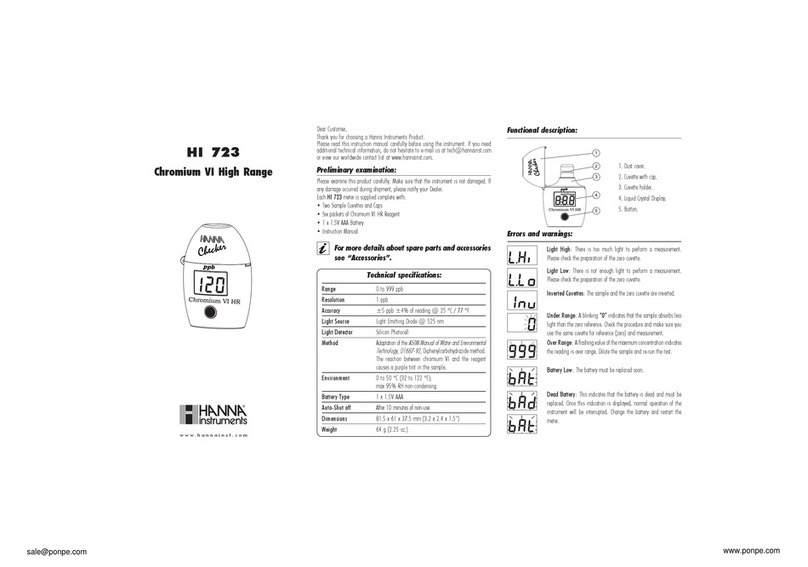
Hanna Instruments
Hanna Instruments HI 723 User manual
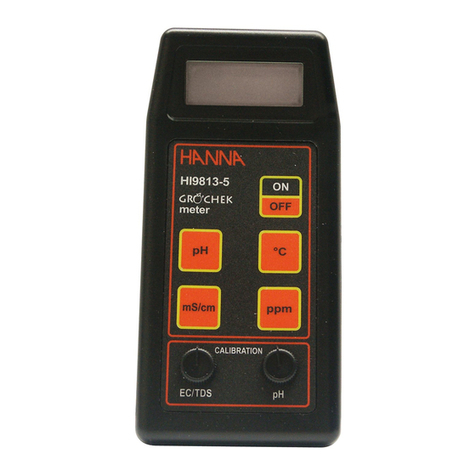
Hanna Instruments
Hanna Instruments HI 9812 User manual
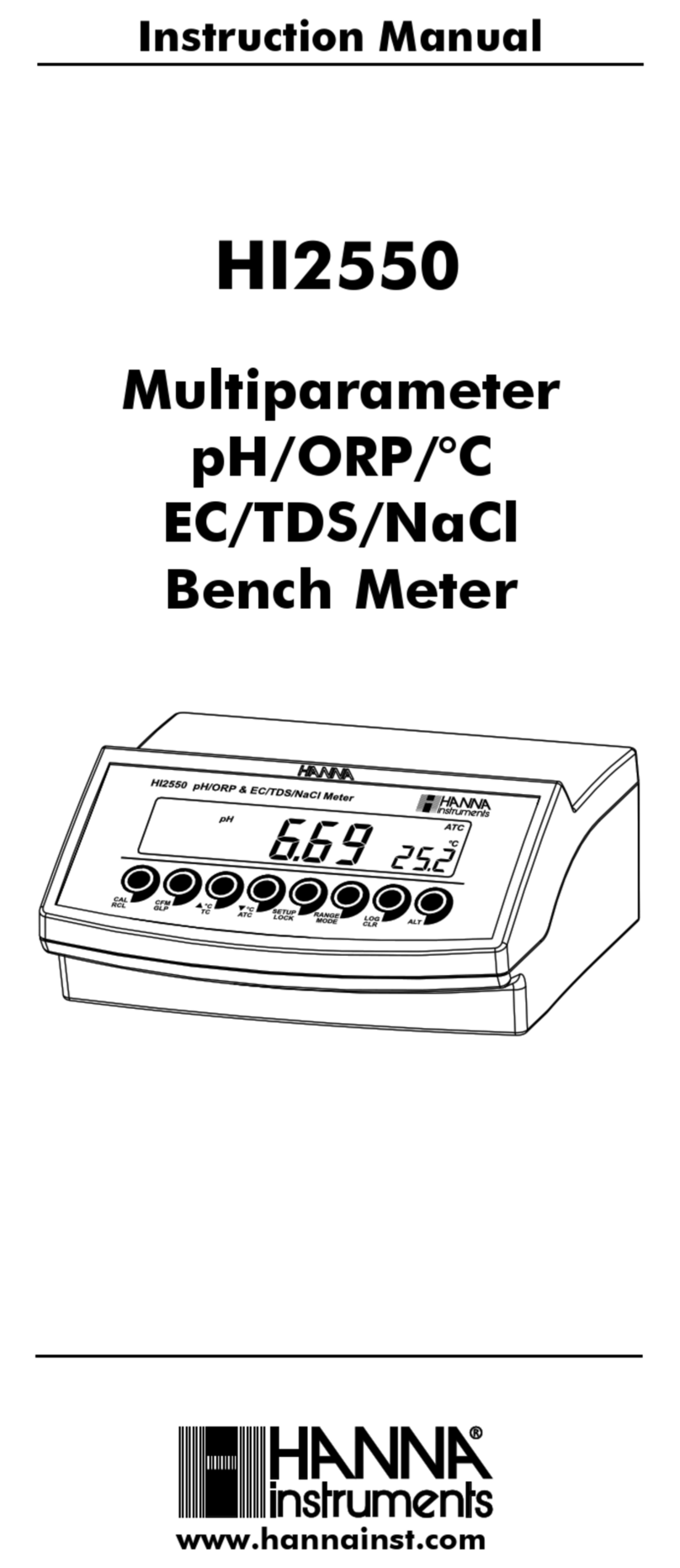
Hanna Instruments
Hanna Instruments HI 2550 User manual
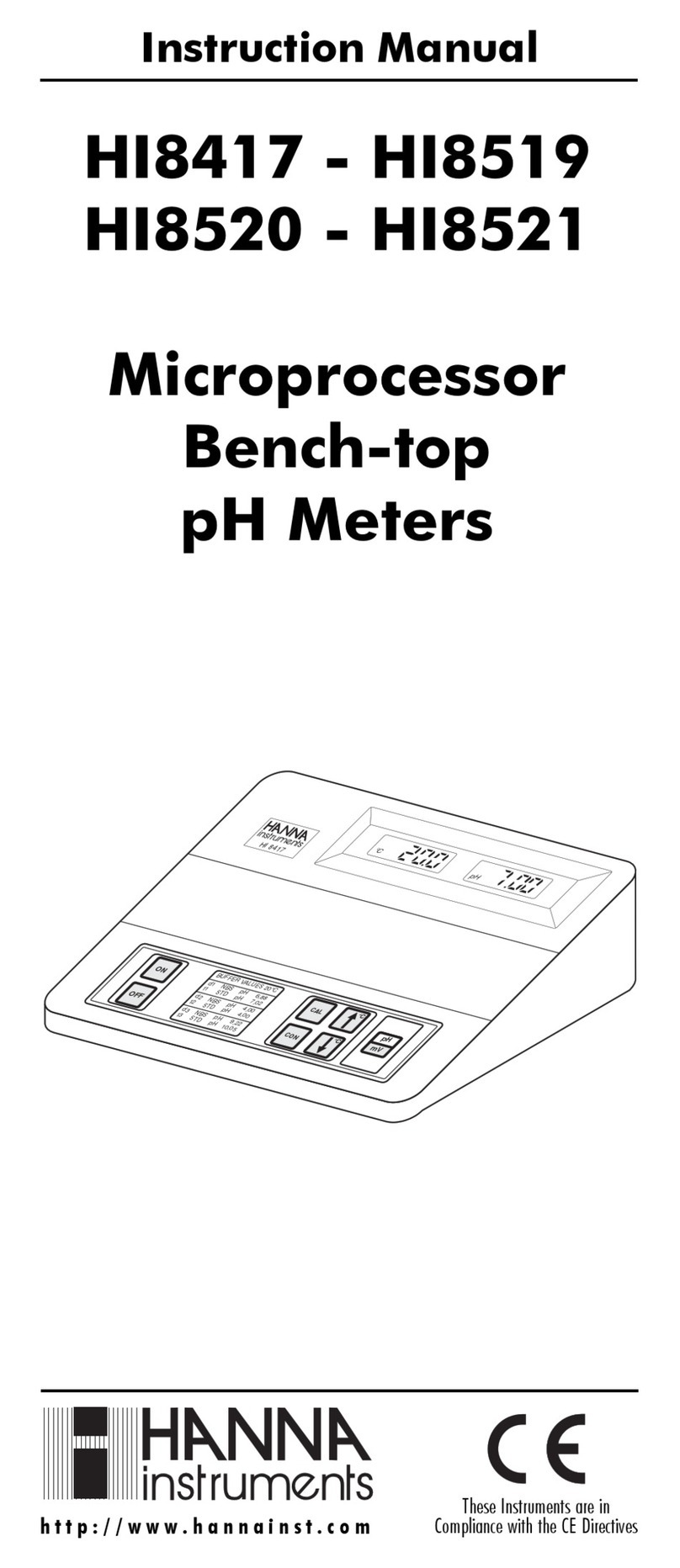
Hanna Instruments
Hanna Instruments HI8417 User manual
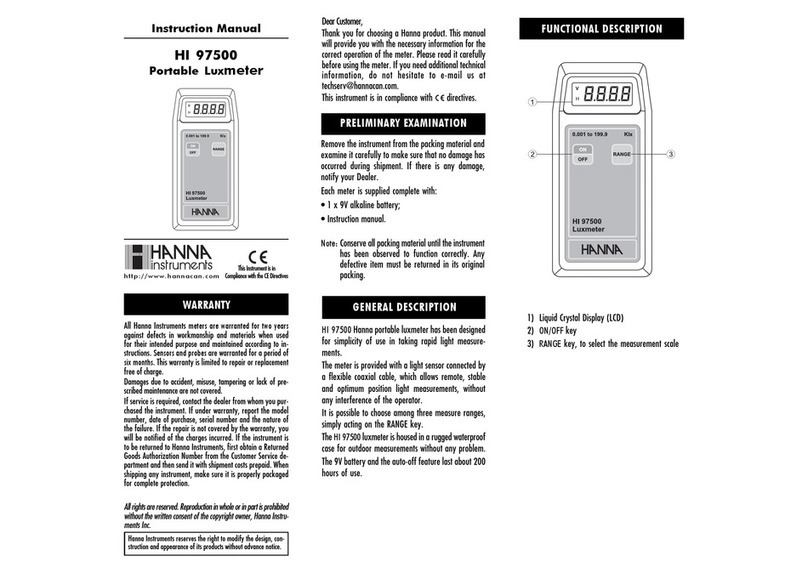
Hanna Instruments
Hanna Instruments HI 97500 User manual
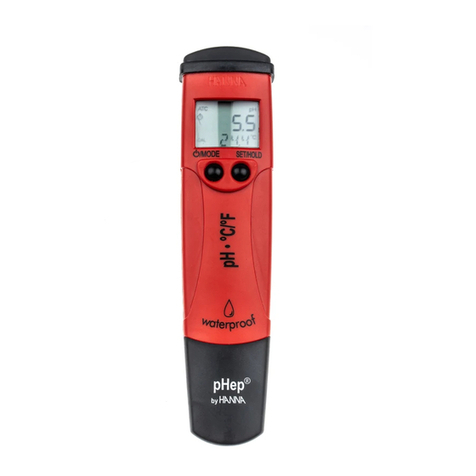
Hanna Instruments
Hanna Instruments HI 98128 User manual
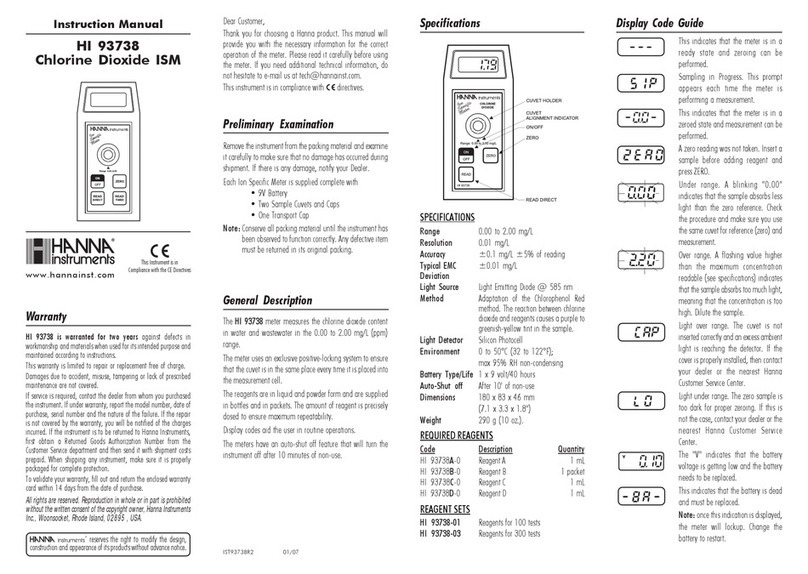
Hanna Instruments
Hanna Instruments HI 93738 User manual
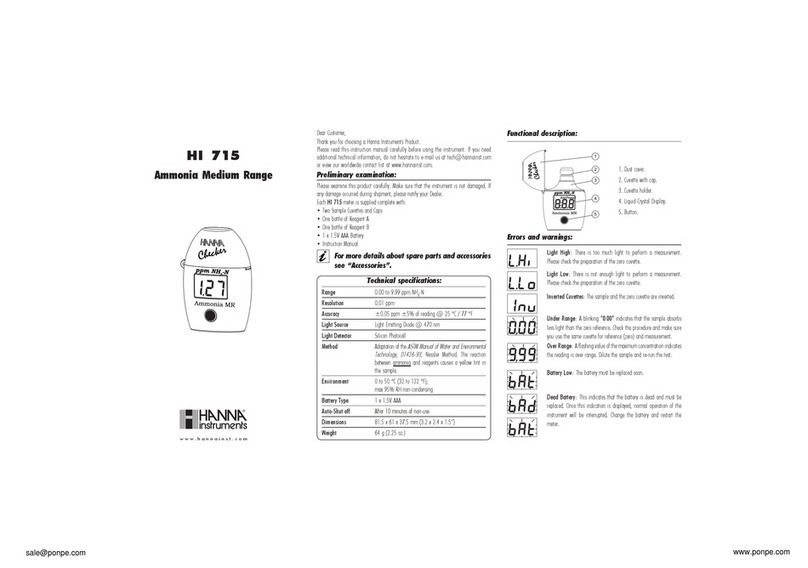
Hanna Instruments
Hanna Instruments Ammonia Medium Range User manual
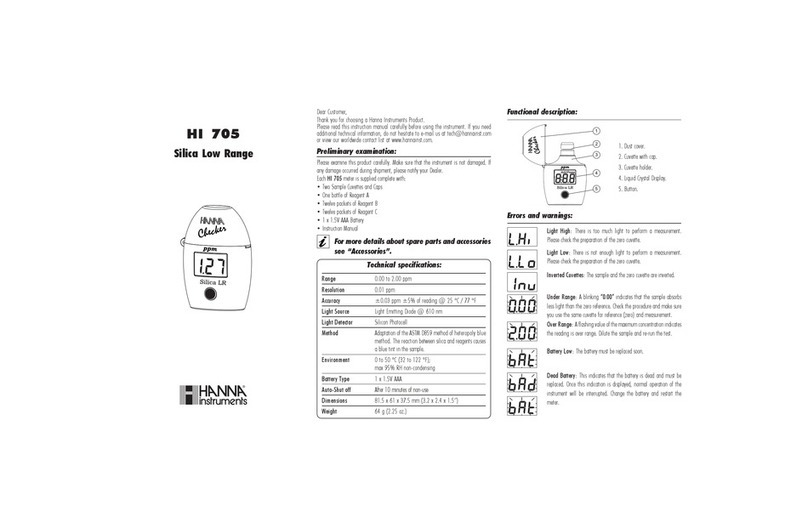
Hanna Instruments
Hanna Instruments HI 705 User manual

Hanna Instruments
Hanna Instruments HI 2214 User manual
Popular Measuring Instrument manuals by other brands

Powerfix Profi
Powerfix Profi 278296 Operation and safety notes

Test Equipment Depot
Test Equipment Depot GVT-427B user manual

Fieldpiece
Fieldpiece ACH Operator's manual

FLYSURFER
FLYSURFER VIRON3 user manual

GMW
GMW TG uni 1 operating manual

Downeaster
Downeaster Wind & Weather Medallion Series instruction manual

Nokeval
Nokeval KMR260 quick guide

HOKUYO AUTOMATIC
HOKUYO AUTOMATIC UBG-05LN instruction manual

Fluke
Fluke 96000 Series Operator's manual

Test Products International
Test Products International SP565 user manual

General Sleep
General Sleep Zmachine Insight+ DT-200 Service manual

Sensa Core
Sensa Core Lacto Spark user manual
